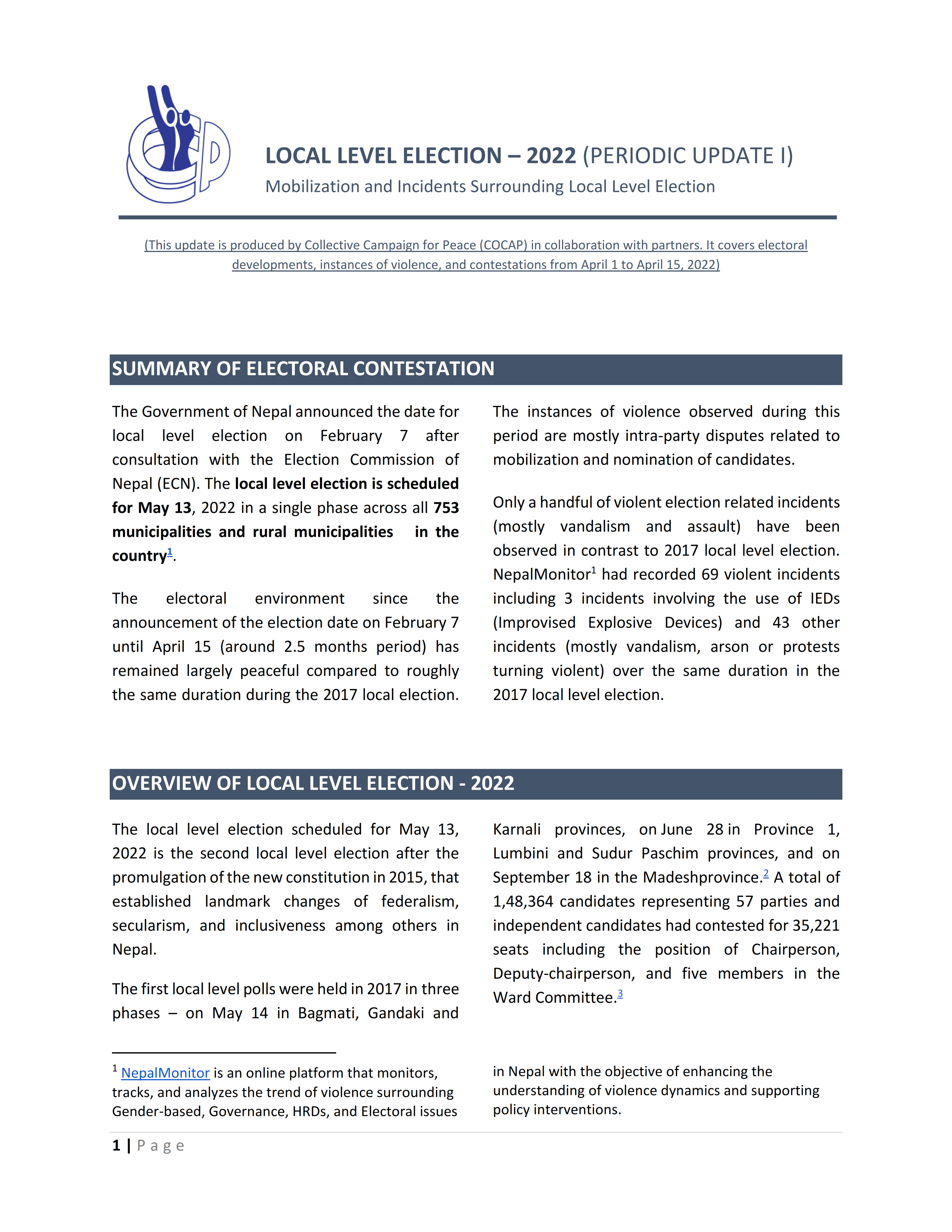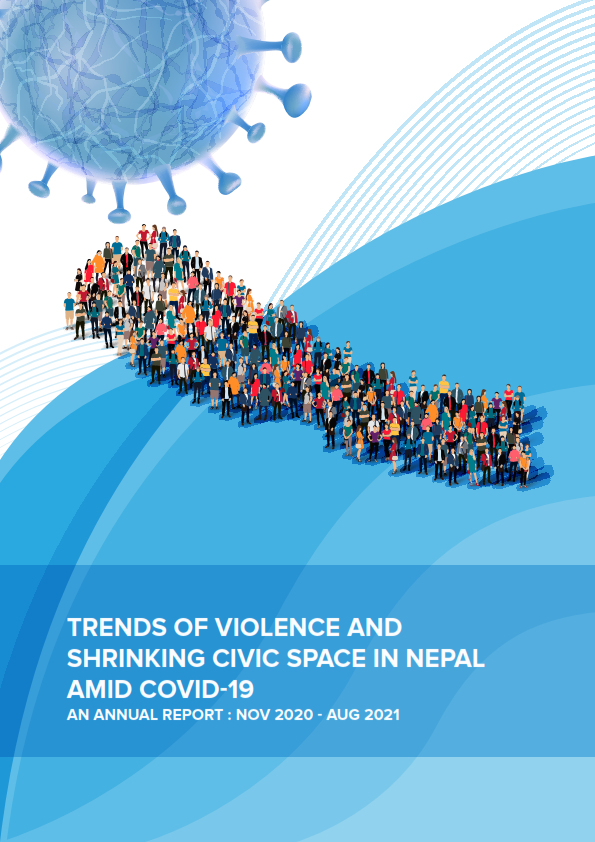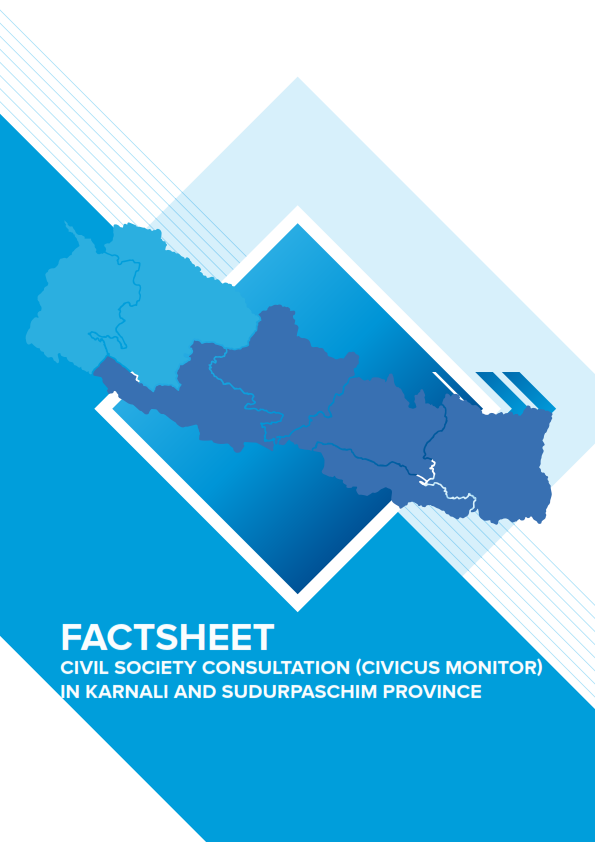Incident Reports
बैशाख १६ देखि उपत्यकामा लकडाउन
2021-04-27
बैशाख १६ देखि उपत्यकामा लकडाउन (निषेधाज्ञा) गरिने भएको छ । सोमबार बसेको काठमाडौं, ललितपुर र भक्तपुरमा प्रमुख जिल्ला अधिकारीको संयुक्त बैठकले १६ बैशाखदेखि निषेधाज्ञा जारी गर्ने निर्णय गरेको हो ।काठमाडौंका प्रमुख जिल्ला अधिकारी कालीप्रसाद पराजुलीले बैशाख १६ गतेदेखि उपत्यकाका तीनवटै जिल्लामा लकडाउन गरिने जानकारी दिएका छन् ।
कोरोना संक्रमण तीव्र गतिमा बढ्न थालेपछि संक्रमण रोक्न लकडाउनमा पुगिएको उनले बताए । उनका अनुसार केही बेरमै सार्वजनिक रुपमा सोमबारको बैठकको निर्णयबारे जानकारी गराइने छ ।
लकडाउन उपयुक्त छ कि छैन भन्ने विषयमा सरकारले स्थानीय तहलाई नै उक्त जिम्मेवारी दिइसकेको छ । र, त्यहीँअनुसार उपत्यकाका तीन जिल्लाका प्रमुखहरुले बैशाख १६ गतेदेखि लकडाउन गर्ने निर्णय गरेका छन् ।
के के खुल्छन् ?
बैशाख १६ देखि काठमाडौं उपत्यकामा अत्यावश्यकबाहेक सबै सेवा बन्द हुनेछन्। सार्वजनिक, निजी सवारीसाधन बन्द गरिने छ।
एम्बुलेन्स, शव वाहन, दमकल, कूनीतिक नियोग, प्रेसलगायतका गाडी चल्ने छन्। तर, अत्यावश्यक कामबाहेक हिँडडुलमा पनि कडाइ गरिने छ।
खाद्यान्त, तरकारी, दूधलगायत दैनिक उपभोग्य वस्तुहरूका लागि बजार खुला गरिने छ। होटेल तथा रेष्टुरेन्टले होम डेलिभरीमात्र गर्न पाउने छन् ।
Details and Impacts
| Violent / Non-violent | Nonviolent |
| Event Duration | More than 7 days |
| Primary Form | Curfew/prohibitory order issues by the state |
| Primary Cause | Other governance issues |
| Secondary Cause | Lockdown Enforcement |
| Actor 1 - Number of people | n/a |
| Actor 1 - Affiliations | Local authorities (incl VDC, district, gov. line agencies at local level except education and health) |
| Actor 1 - Youth | na |
| Actor 2 - Number of people | n/a |
| Actor 2 - Affiliation (Target) | Citizen/Individuals |
| Actor 2 - Youth | na |
Related Reports
Governance / Kathmandu
थाल ठटाएर, सिठ्ठी फुकेर चिकित्सा शिक्षा सरोकार संघर्ष समितिको माइतीघरमा प्रदर्शन
Governance / Darchula
एक वर्षदेखि ज्याला नपाएको भन्दै मजदुरले गरे विद्यालयमा तालाबन्दी
Governance / Sunsari
धरानमा निषेधाज्ञा, प्रवेश नाकामा कडाइ
Governance / Morang
विराटनगरको इस्टर्न कलेजका विद्यार्थी आन्दोलनमा
Related Trend Analysis
Analysis
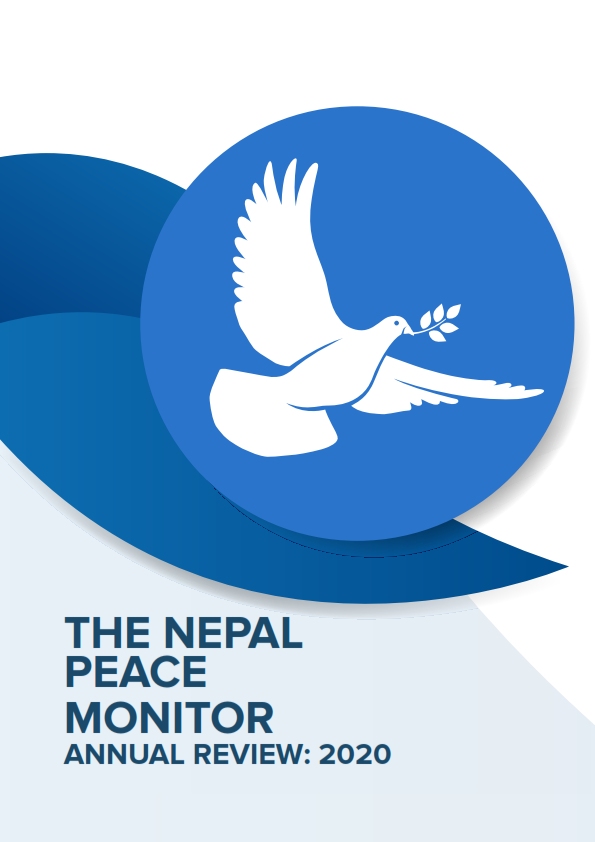
THE NEPAL PEACE MONITOR ANNUAL REVIEW: 2020
October 25, 2021
Human Trafficking / LGBT+ Rights / GBV / Political / Children’s Rights / Senior Citizens’ Rights / HRD Issues / Human Rights / Interpersonal Violence / Governance / Covid-19 / Civic-Space / PwD
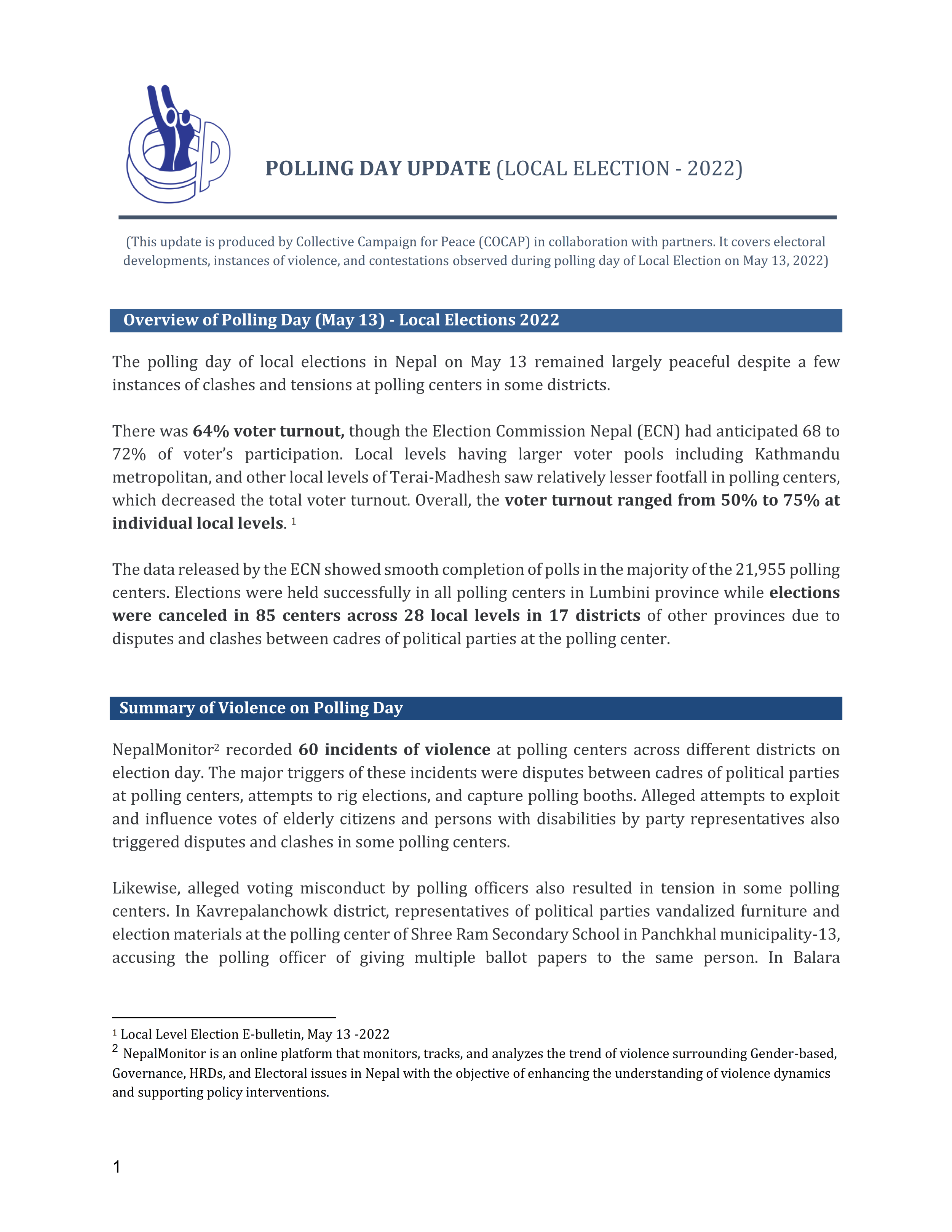
_001.png)
